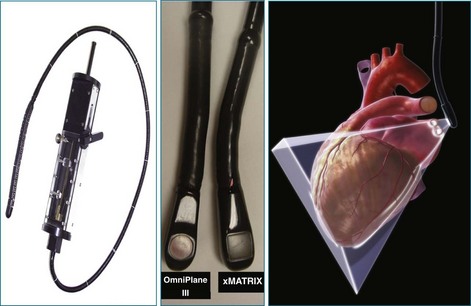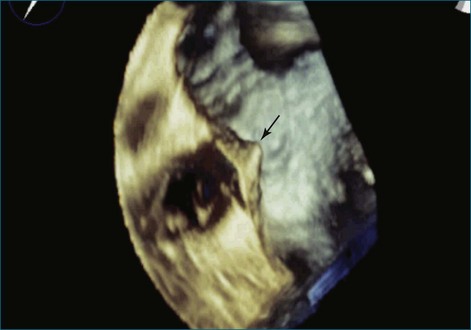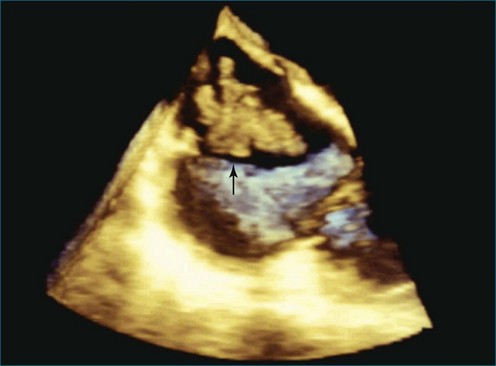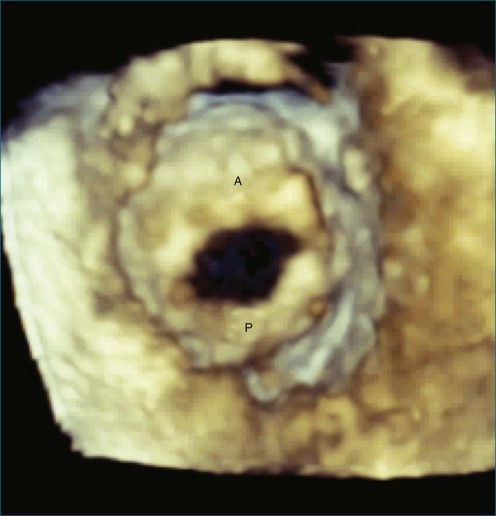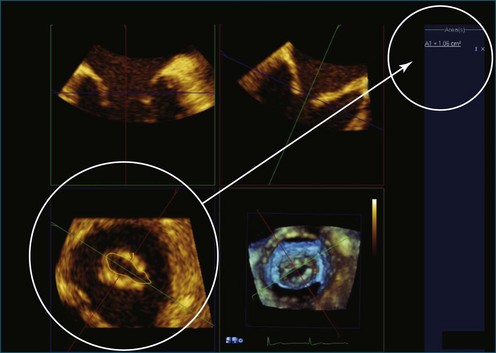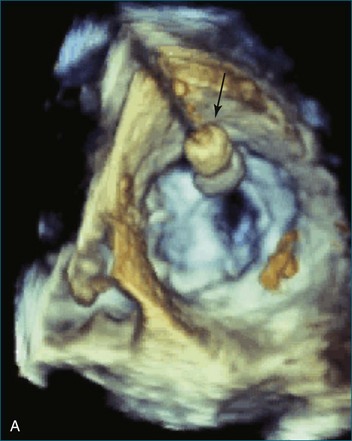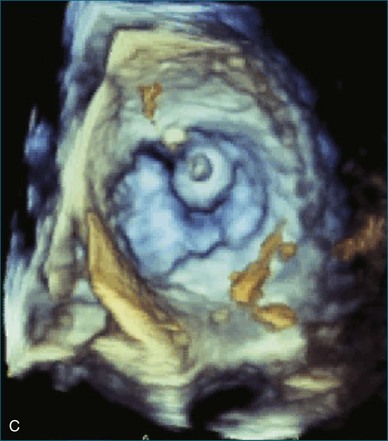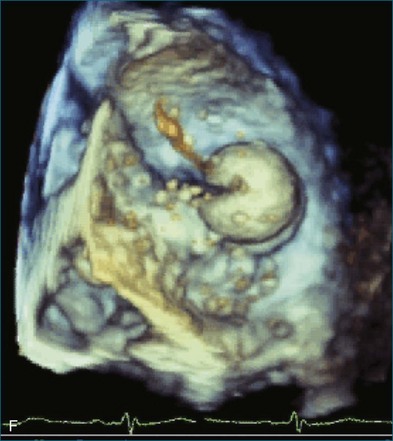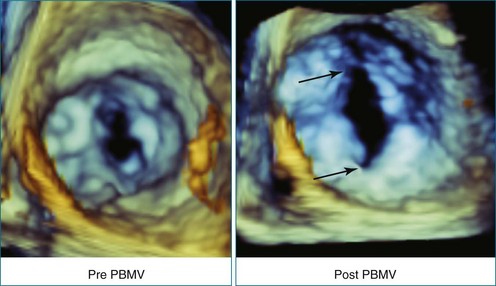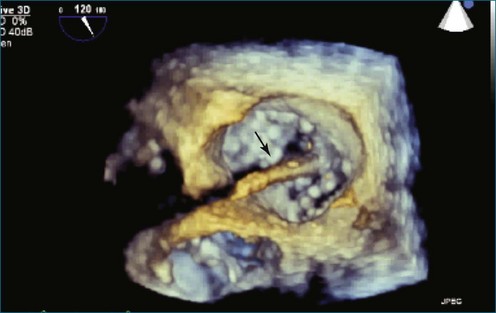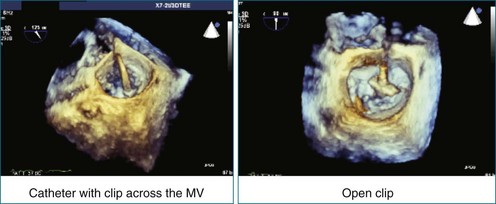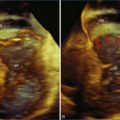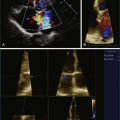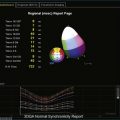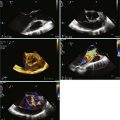Chapter 14 Guidance of Catheter-Based Cardiac Interventions
Over the past 2 decades, percutaneous interventions for structural heart disease have become increasingly common. Interventional cardiologists are now treating a variety of lesions that previously required surgery, and these interventions have become more technically complex over time. Although fluoroscopy, two-dimensional transesophageal echocardiography (2DTEE), and intracardiac echocardiography (ICE) are most typically used for procedural guidance, real-time three-dimensional TEE (RT3DTEE) offers several important advantages over these modalities (Figure 14-1).1
First and foremost, RT3DTEE represents the anatomy and pathology of interest in an intuitive manner. Although the echocardiographer’s expertise is required for image acquisition, those with relatively little training in cardiac imaging can understand 3DTEE images with little difficulty. For example, simultaneous visualization of all six mitral valve scallops is possible in one view in the vast majority of patients, making RT3DTEE ideal for transcutaneous mitral valve repair using the Mitra Clip device (Abbott Vascular, Abbott Park, IL).2–4 In this procedure, the “clip” is delivered to the left atrium via transseptal puncture. RT3DTEE can facilitate this portion of the procedure by demonstrating tenting of the interatrial septum, allowing optimal positioning of the Brockenbrough needle for the septal puncture. For this particular procedure, it is optimal to be slightly superior and posterior to the center of the fossa ovalis. Once the mitral valve clip has been passed into the left atrium, it must then be positioned perpendicular to the line of leaflet coaptation, in the center of the valvular orifice. The clip is deployed to grasp the A2 and P2 scallops. Because spatial relationships on RT3DTEE closely mirror the actual anatomy, an interventionalist can use RT3DTEE to guide catheter movements, verify device placement, and confirm that the mitral valve orifice has been appropriately cleaved in two (Figures 14-2 to 14-8; Videos 14-1 and 14-2).
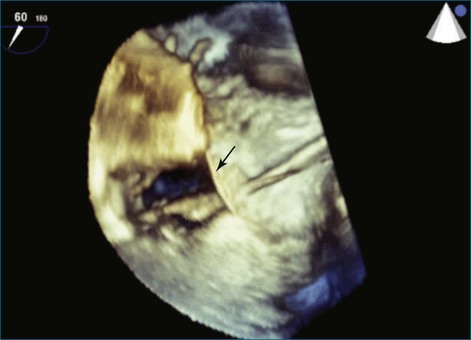
Figure 14-3 Shown is a continuation of the procedure in Figure 14-2. The catheter can then safely traverse the interatrial septum (arrow) to gain access to the left atrium, the mitral valve, or both. In Video 14-2, it is clear that two catheters are present.
RT3DTEE is invaluable in preprocedural planning, particularly when device sizing is a concern. For instance, when a device must be selected for atrial septal defect (ASD), ventricular septal defect (VSD), or patent foramen ovale closure, 3DTEE can provide a true en face view of the defect so that its dimensions can be accurately measured. Such a defect often is elliptical or fenestrated such that 2D imaging cannot fully capture its complex shape.5 Furthermore, the relationship of a defect to vital structures such as the aortic root (in ASD closure) or mitral valve (in VSD closure) is easier to appreciate on RT3DTEE. This may help the interventionalist avoid complications during device deployment (Figure 14-9).
Because RT3DTEE can accurately characterize orifice areas and shapes, it also is well suited for catheter-based left atrial appendage (LAA) closure. RT3DTEE allows optimal visualization of the LAA in the vast majority of patients. 2DTEE tends to underestimate orifice area values, but RT3DTEE findings were shown to correlate well with computed tomography in one small study.6 Accurate device sizing and positioning are critical in this procedure to avoid complications such as device embolization, stroke, and hemopericardium from appendage laceration. RT3DTEE is used to guide transseptal puncture, catheter manipulation in the left atrium, and device deployment. Prior to the conclusion of the procedure, RT3DTEE confirms stability of the device.
Perhaps the most spatially complex lesions addressed in the catheterization laboratory are periprosthetic valvular leaks. Dehiscence of a mitral valve annuloplasty ring or prosthesis, for instance, often results in a single elliptical defect, but multiple defects also may be present. Before starting such an intervention, a thorough evaluation of the relationship between the mitral annulus and the implant is essential to identify the site of the largest defect and the most significant periprosthetic regurgitation. In this setting, RT3DTEE provides significant additional detail that 2DTEE cannot.7,8 During the intervention, RT3DTEE facilitates positioning of wires, catheters, and the closure device. In a patient with a mechanical valve, this modality can help ensure that device deployment does not restrict prosthetic disk motion. Finally, RT3DTEE can be used to reevaluate mitral regurgitation at the conclusion of the intervention. In summary, transcatheter repair of periprosthetic regurgitation is very difficult, if not impossible, to perform effectively without the use of RT3DTEE guidance (Figures 14-10 to 14-16; Video 14-3).
Stay updated, free articles. Join our Telegram channel

Full access? Get Clinical Tree


